- Books Name
- Social Science Book
- Publication
- Cognizance Publication
- Course
- CBSE Class 7
- Subject
- Social Science
Major Landforms
Landscape is being continuously worn away by 2 processes-weathering and erosion.
Weathering is the breaking up of the rocks on the earth’s surface. Erosion is the wearing away of the landscape by different agents like water, wind and ice. The eroded material is carried away or transported by water, wind, etc, and eventually deposited.This process of erosion and deposition create different landforms on the surface of the earth.
Work of a river
The running water in the river erodes the landscape.When the river tumbles at steep angle over very hard rocks or down a steep valley side it forms a waterfall.As the river enters the plain it with twists and turns forming large bends known as meanders. Due to continuous erosion and deposition along the sides of the meander, oxbowlake is created overtime. When the river overflows its banks, it leads to the flooding of the neighbouring areas.Asit floods, it deposits layer of fine soil and other materials called sediments along its banks.This led to the formation of a flat fertile floodplain. The raised banks are called levees. As the river approaches the sea the speed of the flowing water decreases and the river begins to break up.The breaking of river into a number of streams is called distributaries.The river becomes so slow that it begins to deposit its load.East distributary forms its own mouth. The collection of sediments from all the mouth forms a delta.
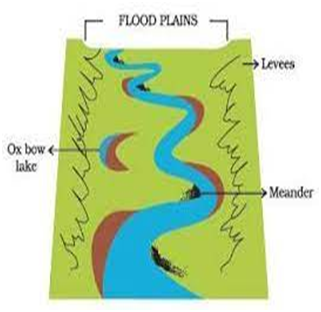
There are thousands of small waterfalls in the world. The highest waterfall is Angel falls of venezuela in south America. The other waterfalls are Niagara falls located on the border between Canada and USA in North america and victoria fallson the borders of zambia and zimbabwe in africa.
Work of sea waves
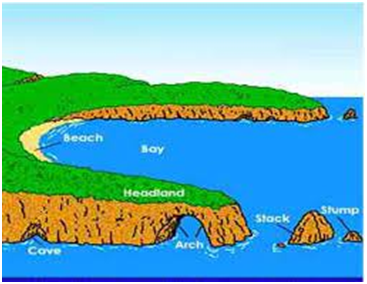
The erosion and deposition of the sea waves give rise to coastal landforms.Seawaves continuously strike at the rocks.Cracks develops and with they become larger and wider.Thus hollow like caves are formed on the rocks, which are called sea caves. Overtime, these cavities become bigger and bigger only the roof of the caves remainwhich resultsinformation of sea arches.Further, erosion breaks the roof and only walls are left. These walls life features are called stacks.The steep rocky coast rising almost vertically above sea water is called Seacliff. The seawaves deposit sediments along the shores forming beaches.
Work of Ice
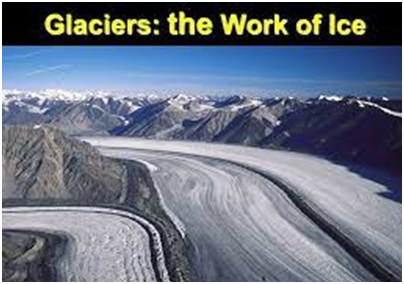
A Glacier is a large mass of ice continuously moving over land surface, which too erode the landscape by bulldozing soil and stones to expose the solid rock below. Glaciers carve out deep hollows.As the ice melts, they get filled up with water and become beautiful lakes in the mountains. The material carried by the glacier, such as rocksbig and small, sand and siltget deposited. These deposits form glacial moraines.
Work of wind
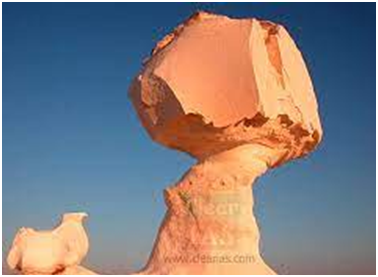
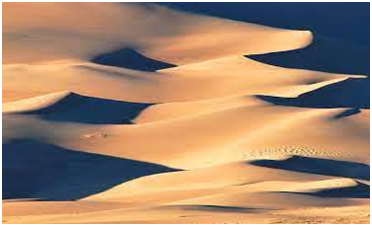
An active agent of erosion and deposition in the desert is wind.In deserts, rocks are present in the shape of a mushroom, commonly called mushroom rocks.Winds erodethe lower section of the rock more than the upper part.Therefore, such rocks havenarrower base and wider top.When the wind blows, it lifts and transport sand from one place to another.When it stops blowingthe sand falls and get deposited in low hill like structure which are called sand dunes. When the grains of sand are very fine and light, the wind can carry it over very long distances.When such sand is deposited in large areas, it is called loess. Large deposits of loess is found in China.

 Cognizance Publication
Cognizance Publication
